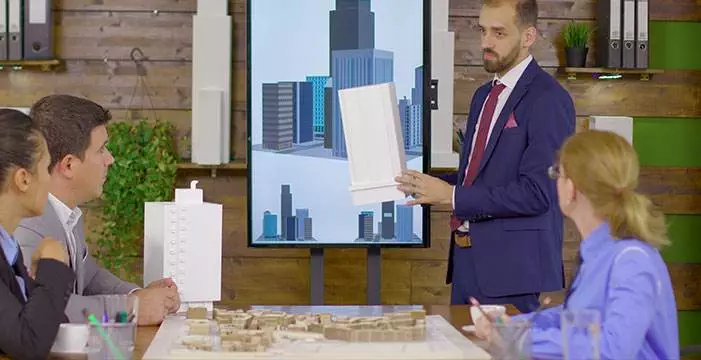The Importance of Asset Management for Buildings
Asset Strategy Inc. (ASI) addresses these requirements with a comprehensive approach, combining advanced technology and expert analysis. The company provides detailed evaluations that guide stakeholders through essential building maintenance and resilience planning. ASI ensures that buildings remain safe, operational, and resilient.

Building Condition Report (BCR)
A Building Condition Report (BCR) offers a detailed assessment of a building’s current physical state, ensuring operational safety and efficient asset management. This report relies on advanced tools and techniques for inspecting structural components, identifying system failures, and recommending necessary actions.
Visual inspections cover critical components such as foundations, roofing, and exterior walls. Professionals use high-definition cameras, drones, and other equipment to assess difficult-to-access areas. These tools help identify structural weaknesses, material deterioration, and safety hazards before they lead to more serious issues.
2. Systems Assessment
HVAC, plumbing, and electrical systems are evaluated for compliance with industry standards and operational efficiency. Techniques like thermal imaging help detect faults in HVAC systems, while testing protocols for electrical systems ensure adherence to safety standards. This detailed evaluation helps avoid breakdowns, reduce energy costs, and ensure reliable system performance.
3. Maintenance Review
Evaluating maintenance records provides insights into recurring issues or missed repairs that might indicate deeper problems. This review identifies patterns that could point to inefficiencies in the building’s upkeep, allowing facility managers to prioritize repairs and implement long-term solutions.
4. Recommendations and Cost Estimates
Experts provide recommendations that address the most urgent needs while offering strategies for long-term improvements. Cost estimates are supported by data on material costs, labour, and future savings, helping building owners make informed financial decisions.
Climate Risk and Vulnerability Assessment (CRVA)
A Climate Risk and Vulnerability Assessment (CRVA) evaluates how climate-related risks, such as extreme weather events and rising temperatures, can impact buildings’ structural integrity and performance. This assessment ensures that buildings are prepared for future environmental challenges.
Risk identification involves mapping potential hazards like flooding, storms, and heat waves based on geographic location and historical climate data. Geospatial analysis tools, such as GIS, help determine the probability and impact of these risks, allowing building managers to plan accordingly.
2. Vulnerability Analysis
This step focuses on the building’s ability to withstand climate-related stressors. Tools like structural simulations and material durability tests evaluate how various components, such as foundations and roofing, will respond to extreme conditions. The analysis helps identify weaknesses that may need reinforcing.
3. Adaptation Strategies
Effective adaptation strategies include retrofitting buildings with materials that can withstand heat or flooding, improving drainage systems, and enhancing insulation. Engineers and building managers work together to apply these strategies to improve resilience and energy efficiency.
Integration of BCR and CRVA
Integrating BCR with CRVA comprehensively evaluates a building’s physical state and capacity to withstand climate-related risks. This combined approach allows stakeholders to identify critical structural weaknesses alongside potential climate threats, such as flooding or extreme heat. For instance, property managers can prioritize reinforcement and implement effective flood mitigation strategies if a BCR reveals that a building’s foundation is deteriorating, and the CRVA indicates a high risk of flooding in the area. This proactive alignment minimizes repair costs and enhances the building’s overall resilience, ensuring long-term safety and functionality.
Above that, this integration supports informed decision-making by enabling property managers to allocate resources effectively based on comprehensive data. A unified assessment aids in developing targeted maintenance and improvement plans that address immediate repair needs while enhancing climate resilience. As regulatory requirements increasingly emphasize sustainability and climate preparedness, this holistic view helps building owners ensure compliance and improve their asset’s marketability. Ultimately, the integration of BCR and CRVA positions ASI as a leader in guiding clients toward safer, more sustainable buildings equipped to thrive amid evolving environmental challenges.
Contact Us
For more information on how ASI can help safeguard your properties, contact us at info@AssetStrategyInc.com. Our experts are here to support you in improving the safety and resilience of your buildings. Together, we can create a secure future for your assets.
Condition Assessments of Physical Assets
Condition assessments systematically evaluate an asset’s physical state and performance to ensure reliability, safety, and…
Experts in Municipal Decarbonization and Energy Reduction Strategies
The push for sustainability has never been more critical, especially for municipalities seeking to lower their carbon footprint…
Watershed Assessment and Management Plans: A Comprehensive Guidet Management Plans?
A watershed is more than just a geographical feature. It represents a critical component of the hydrological cycle, where all the wate…


